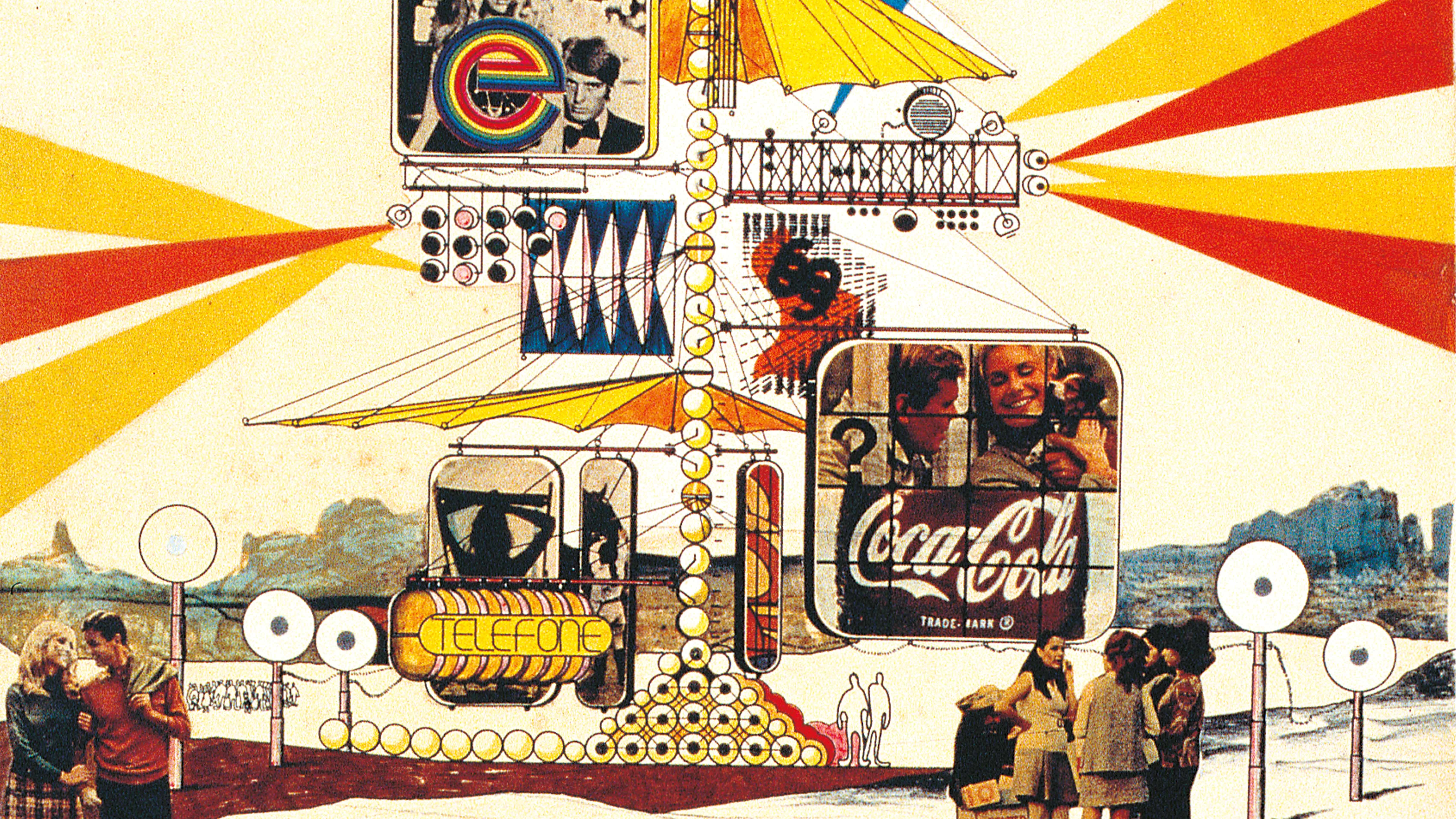
Archigram, Instant City: Self Destruct Environ Pole, 1969
The most radical utopias of the second half of the 20th century have ended up converging with the theme city. In a world colonized by technical reason and mass entertainment, the popular demand for leisure and fantasy has crystallized in childish copies or replicas of historical or mythical architectures as privileged spaces for spare time, and the city designed in this manner is in the end not very different from that proposed by the libertarian or hedonistic utopias that make of the homo ludens their main addressee. In the tradition of the playful scenographies of the Russian avant-gardes, the New Babylon of the situationists choreographed its haphazard drifts with chaotic megastructures and labyrinths of staircases with the unequivocal taste of the woodwork of stage sets; in a similar way, but finding inspiration rather in the science fiction of comics and films, the Walking City or the Instant City of Archigram drew changing environments –resembling a technological circus or a rock concert stage – to welcome thousands of youngsters on permanent vacation. In the end, all that existentialist or pop spontaneity culminates in the consumerist architecture of thematic leisure; both Constant and the other followers of Guy Debord in their critical rejection of the society of spectacle, as well as Ron Herron, Peter Cook and the remaining Archigram members in their innocent celebration of advertising and commerce, end up by coinciding in the attribution of the main role in their respective utopias to the autonomous, hedonistic subject of the liberal and individualistic modernity. That serial consumer transformed into a free citizen is the target of the artificial paradises of the affluent society: the simulacrum of culture, the simulacrum of nature and even the simulacrum of childhood...[+]






